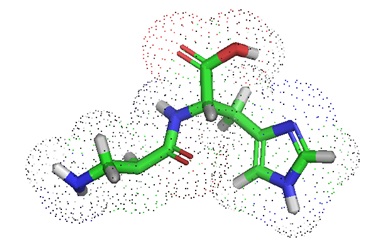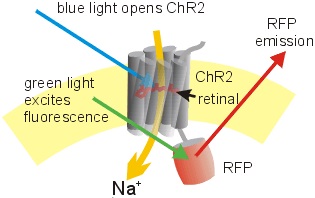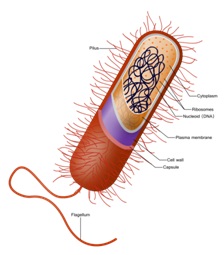|
|
|
Bio-Synthesis Newsletter - December 2016
|
World Aids Day 2016
 World AIDS
Day is observed on December 1, drawing attention to the status
of the worldwide epidemy caused by the human immunodeficiency
virus/acquired immunodeficiency syndrome (HIV/AIDS). Because of
antiviral therapy HAART, the life expectancy of HIV-infected people has
increased dramatically. However, HAART cannot
rid the body of HIV and must be taken every day for life. But there is
hope. Scientists at the NIH have recently identified a potent antibody from
an HIV-infected person that globally neutralizes up to 98% of HIV
isolates tested. We hope that there will be a vaccine against HIV/AIDS
available soon. World AIDS
Day is observed on December 1, drawing attention to the status
of the worldwide epidemy caused by the human immunodeficiency
virus/acquired immunodeficiency syndrome (HIV/AIDS). Because of
antiviral therapy HAART, the life expectancy of HIV-infected people has
increased dramatically. However, HAART cannot
rid the body of HIV and must be taken every day for life. But there is
hope. Scientists at the NIH have recently identified a potent antibody from
an HIV-infected person that globally neutralizes up to 98% of HIV
isolates tested. We hope that there will be a vaccine against HIV/AIDS
available soon.
|
|
Read More
|
|
|
Is Carnosine A Natural Antioxidant?
 Carnosine (β-Alanyl-Lhistidine) is
a bioactive endogenously abundant dipeptide. Carnosine is found in
various mammalian (animal) tissues including brain, kidney, heart,
liver, skeletal muscle, and skin. Carnosine levels are higher in
fast-twitch and lower in slow-twitch muscles. Carnosine is
thought to act as an antioxidant that destroys free radicals. The exact
role of carnosine in muscle and exercise is presently unknown and
speculative. Carnosine is a zwitterion. Carnosine can be analyzed in an
amino acid analyzer as the dipeptide or
hydrolyzed into the two amino acids βalanine and L-histidine. More
recently, mass
spectrometry, especially LC-MS(MS) now also offers itself as a
sensitive tool for its detection and analysis. Carnosine (β-Alanyl-Lhistidine) is
a bioactive endogenously abundant dipeptide. Carnosine is found in
various mammalian (animal) tissues including brain, kidney, heart,
liver, skeletal muscle, and skin. Carnosine levels are higher in
fast-twitch and lower in slow-twitch muscles. Carnosine is
thought to act as an antioxidant that destroys free radicals. The exact
role of carnosine in muscle and exercise is presently unknown and
speculative. Carnosine is a zwitterion. Carnosine can be analyzed in an
amino acid analyzer as the dipeptide or
hydrolyzed into the two amino acids βalanine and L-histidine. More
recently, mass
spectrometry, especially LC-MS(MS) now also offers itself as a
sensitive tool for its detection and analysis.
|
|
Read More
|
|
|
Optogenetics and Imaging in Neuroscience Research
 The
use of optogenetics is one of the most active and exciting technologies
in neuroscience. Optogenetics involves the use of light to control
cells in living tissue. Genetically encoded, single-component
optogenetic tools enable specific modulation of selected cells within
complex neural tissues. Optogenetic
Tool families inclue channelrhodopsins, halorhodopsins, and
rhodopsin-G protein-coupled chimeras that respond to green (500 nm)
light which are used to illuminate biological functions in neurons.
These tools are now used in neuroscience to study neuronal excitation
and networks. The use of femtosecond lasers, such as ytterbium fiber
lasers, together with molecular techniques will further expand the
optogenetic toolbox enabling optical control in biochemistry and
neuroscience needed in brain research. The
use of optogenetics is one of the most active and exciting technologies
in neuroscience. Optogenetics involves the use of light to control
cells in living tissue. Genetically encoded, single-component
optogenetic tools enable specific modulation of selected cells within
complex neural tissues. Optogenetic
Tool families inclue channelrhodopsins, halorhodopsins, and
rhodopsin-G protein-coupled chimeras that respond to green (500 nm)
light which are used to illuminate biological functions in neurons.
These tools are now used in neuroscience to study neuronal excitation
and networks. The use of femtosecond lasers, such as ytterbium fiber
lasers, together with molecular techniques will further expand the
optogenetic toolbox enabling optical control in biochemistry and
neuroscience needed in brain research. |
|
Read More
|
|
|
Antigenic Peptides for Epitope Mapping
 Synthetic
peptide libraries are useful tools for the development of vaccines
against invasive pneumococcal
disease. Invasive pneumococcal disease (IPD) is an infection caused
by the Streptococcus pneumonia
bacteria. This infection can lead to pneumonia, infection of the
blood, serious middle-ear infections or bacterial meningitis. The WHO
estimates that this disease kills half a million children below five
years every year. However, a large reduction in disease incidences has
been seen in countries that have used pneumococcal conjugate vaccines
(PCV). Lagousi et al. in 2015 reported the use of synthetic 20-mer peptides for
epitome mapping studies of major antigenic fragments from pneumococcal
virulence proteins. Synthetic
peptide libraries are useful tools for the development of vaccines
against invasive pneumococcal
disease. Invasive pneumococcal disease (IPD) is an infection caused
by the Streptococcus pneumonia
bacteria. This infection can lead to pneumonia, infection of the
blood, serious middle-ear infections or bacterial meningitis. The WHO
estimates that this disease kills half a million children below five
years every year. However, a large reduction in disease incidences has
been seen in countries that have used pneumococcal conjugate vaccines
(PCV). Lagousi et al. in 2015 reported the use of synthetic 20-mer peptides for
epitome mapping studies of major antigenic fragments from pneumococcal
virulence proteins. |
|
Read More
|
|
|
|
|
|
Bio-Synthesis, Inc.
800 Mario Court, Lewisville, TX 75057, USA
Toll Free: 800.227.0627 | 1.972.420.8505 (Intl.)
|
|
|
|
|
|